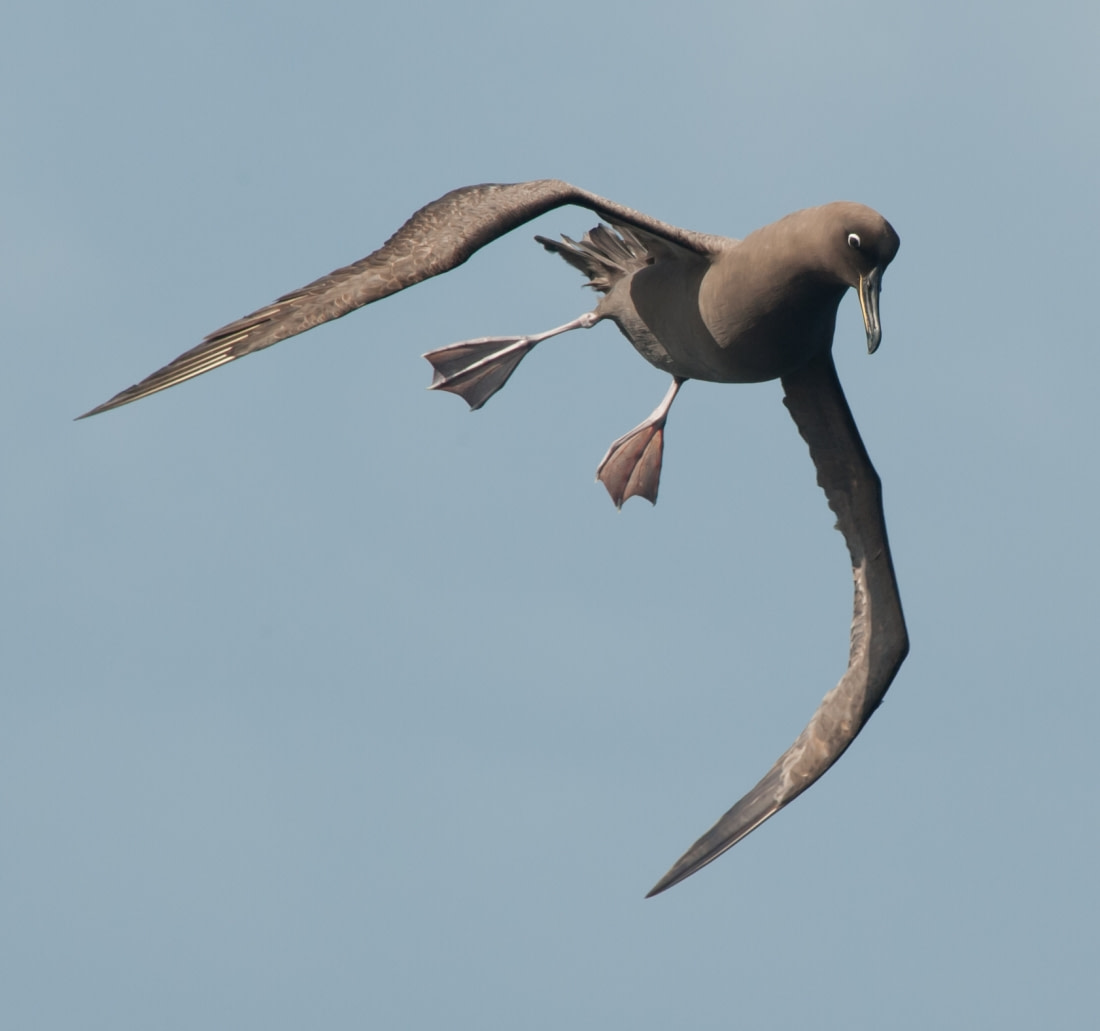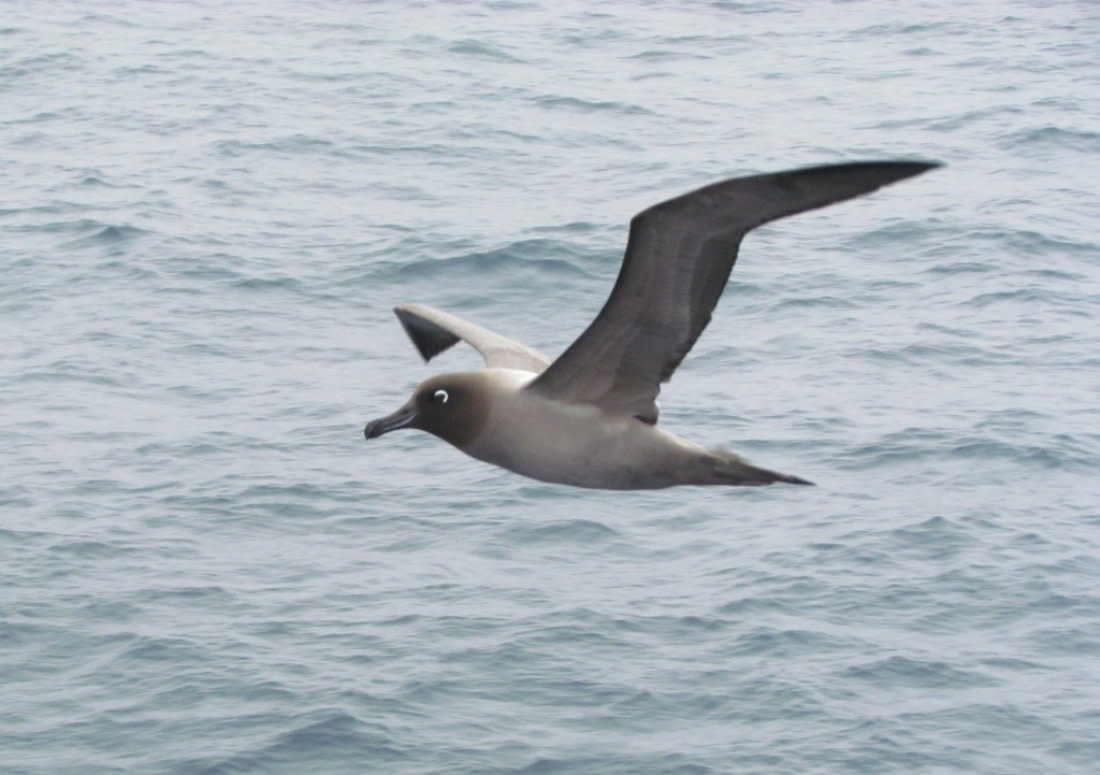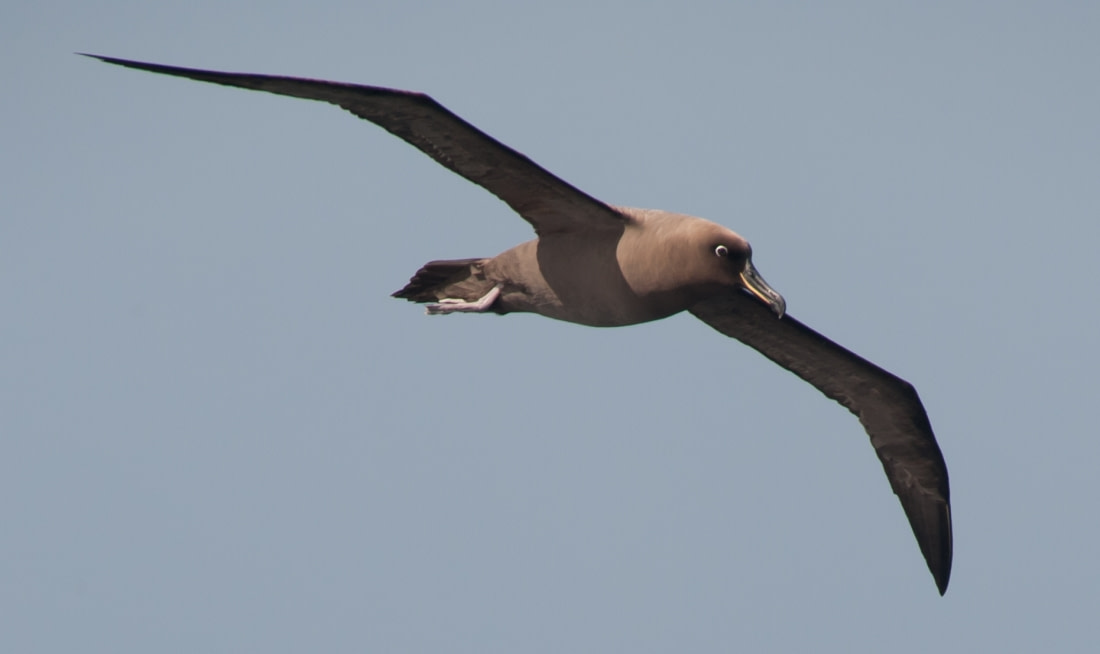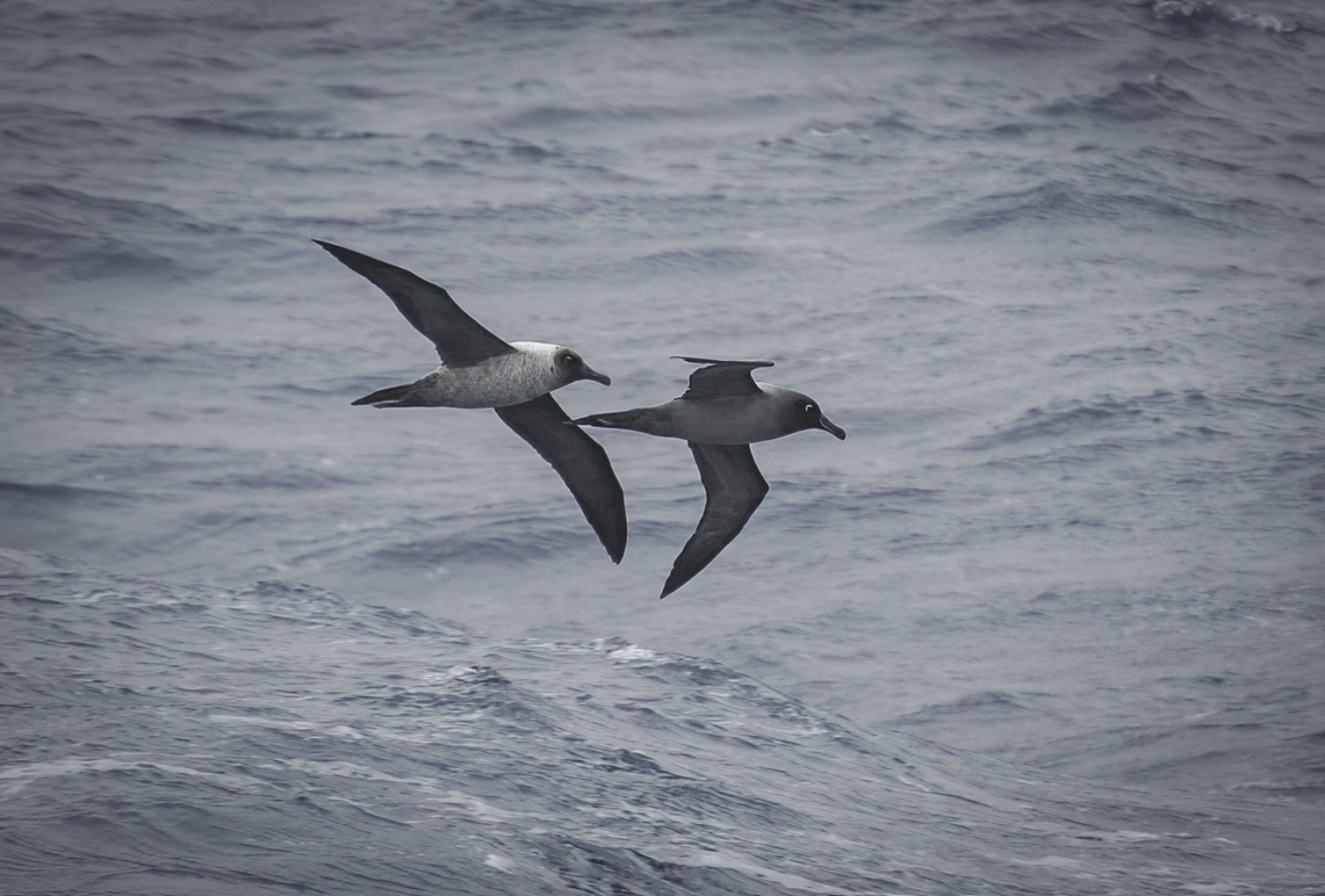Name: Light-mantled Albatross, Grey-mantled Albatross, Light-mantled Sooty Albatross (Phoebetria palpebrata)
Length: 80 to 90 cm.
Weight: 2.5 to 3.5 kg.
Location: Circumpolar around the Southern Ocean. Pelagic except when breeding.
Conservation status: Near Threatened.
Diet: Squid, krill, crustaceans, fish, carrion.
Appearance: Ash coloured with darker area around the head and lighter areas across the back and wingtips. Black bill. Distinctive white stripe immediately above the eye.

How do Light-mantled Albatrosses feed?
Light-mantled Albatrosses are surface-fishers, diving about 5 metres on average. They follow dolphins and whales to benefit from the mammals' herding of fish. They also follow fishing trawlers to steal fish and pick up offal, though less frequently than other Albatross species.
Are Light-mantled Albatrosses social?
They are generally solitary at sea and form loose breeding colonies during mating season.
How fast do Light-mantled Albatrosses fly?
Using wind currents and gravity (dynamic soaring), they can fly 110 metres with a drop of only 5 metres, reaching speeds over 110 km per hour.

What are Light-mantled Albatross birthing rituals like?
They mature sexually at 8 years old and mate until around 30, every second year. They form loose colonies or nest solitarily. Monogamous, they renew courtship for decades. Nests are built on sheltered cliff faces or ledges, made of mud with a grass-lined hollow. A single egg is laid in October-November, incubated for up to 70 days. The chick hatches around year-end, taking 4 days to break free. Parents feed the chick via regurgitation for 20 days until it fledges.
How long do Light-mantled Albatrosses live?
They can live for over 40 years in the wild.

How many Light-Mantled Albatrosses are there today?
There are about 87,000 Light-mantled Albatrosses worldwide.
Do Light-mantled Albatrosses have any natural predators?
Their young and eggs are preyed upon by rats, feral cats, and Giant Petrels.
7 Awesome Light-mantled Albatross Facts
1. They have a gland above their nasal passages that expels excess salt from sea water.
2. They produce foul-smelling oil in their stomachs for feeding young, sustaining long flights, or deterring predators.
3. Masters of gliding, they travel thousands of kilometres on wind currents without flapping their wings.
4. Their soaring method is so energy-efficient it uses less energy than sitting in a nest.
5. They rely on wind speeds of about 18 km per hour for lift and can be blown off-course by strong winds.
6. Take-off is ungainly, requiring a fast wind or a long water surface to gain speed.
7. They can be ungraceful when landing, often toppling over if still moving too fast.

The Eight Albatrosses of Antarctica and the Sub-Antarctic






